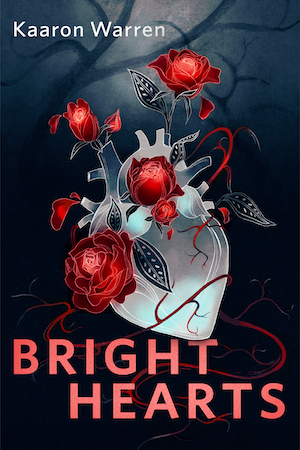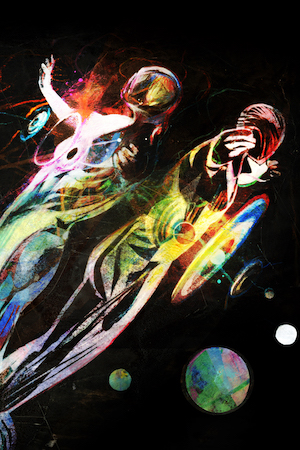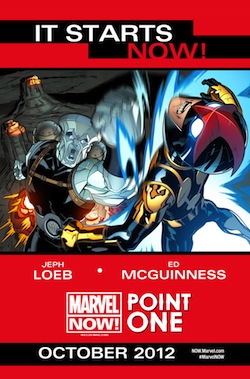Though Marvel may not openly admit it—or maybe they have and I just missed their blatant honesty—the upcoming Marvel NOW! Initiative seems like a direct response to DC’s New 52 relaunch from a year ago.
If you haven’t heard, the plans for Marvel NOW! involve relaunching most of the company’s core titles with brand new #1 issues beginning in the second week of October, with new creative teams, presumably to get the same kind of media attention and sales boost that DC saw with their New 52 lineup.
The war of escalation between the two companies usually revolves around major line-wide event comics—“I’ll see your Final Crisis and raise you one Secret Invasion”—but now the new mode of operation looks to be a battle of who can get the most attention for their #1 issues. As we saw with the New 52 relaunch—a revamp of character continuities and alchemical mixture of creative talent—the promise of thrilling new first issues didn’t exactly carry over to promises of high quality for the following year. Some series remained excellent, but many of the New 52 floundered in their first year, with heavy-handed editorial mandates driving some creators away from the company or frustrating others enough that they spoke out about their problems working on the first year of revamped comics.
With a year’s perspective—and this became apparent far sooner than the one-year mark—the success of the New 52 ends up as a success of marketing rather than aesthetic or narrative quality. People paid attention to the line-wide relaunch, the media took note, and the promise of a fresh start with some different creative teams implied that the quality of the overall line might improve. Sales bumped up significantly, but the readership has already begun to significantly dwindle away, and last time I checked, DC sales weren’t enormously higher than they were prior to the New 52.
So with Marvel NOW! on the horizon, what will DC’s sales-driven retaliation look like? It’s too early for another relaunch, but we will likely see something to get more eyeballs back on the comics again. Maybe a partial relaunch. Another creative shuffling. Or, and this is more likely, the buildup to an event where nothing will ever be the same again.
All of that remains to be seen, but what we do know for sure is that Marvel NOW! will give us a bunch of new first issues and a coordinated creative shuffling larger than anything Marvel has done in recent years. This isn’t a reboot, according to everyone at Marvel, but it’s a relaunch coming out of the events of the recently-concluded Avengers vs. X-Men event series. The continuity remains intact, though anyone who has read comics for more than a few years knows that continuity is as intact as writers and editors want it to be, and past events are often ignored as if they never happened, because it’s unwieldy, and ineffective to telling good stories, to let every prior misstep by other creators lead to narrow storytelling choices in the future.
So, Marvel NOW!, where the Marvel Universe gets a facelift and a fresh start, but the hard living of the past isn’t swept away by decree.
Let’s take a look at each of the new series we know about, and I’ll offer my perspective on each, alphabetically, in response to a question perhaps you’re wondering about: Are any of these going to be worth reading?
A+X by Various
This is a bit of a twist on this summer’s AvX: Vs miniseries. Only, this time, it’s a new ongoing series where a member of the Avengers teams up with a member of the X-Men instead of conducting an epic head-to-head battle. The first issue teams up Hulk and Wolverine in the opening sequence and Cable and Captain America join forces in the second half of the issue, with Jeph Loeb and Dale Keown on the former and Dan Slott and Ron Garney on the latter. Unless you’re an obsessive fan of any of those individual creators, this is a completely skippable comic from all appearances.
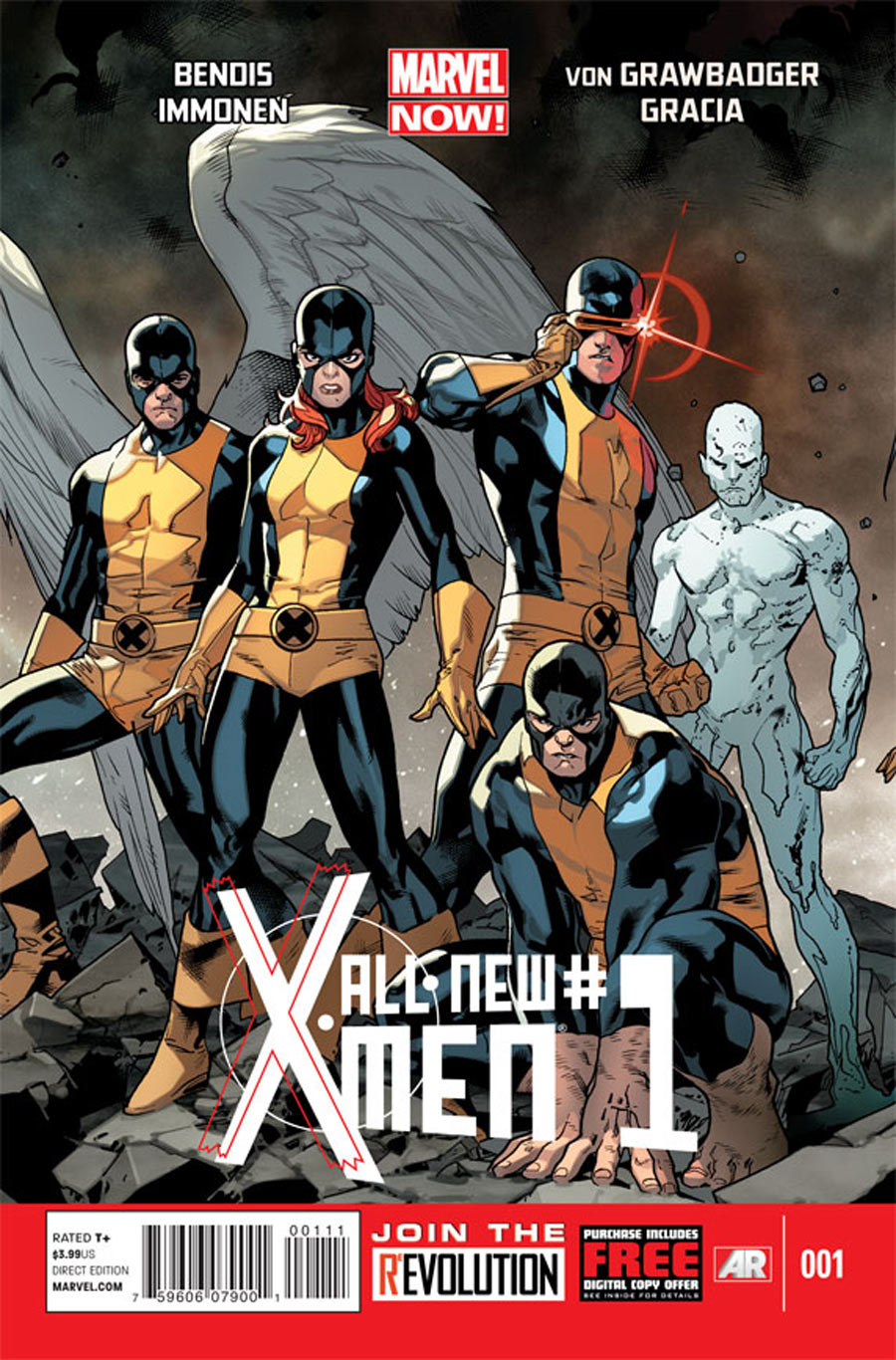 All-New X-Men by Brian Michael Bendis and Stuart Immonen
All-New X-Men by Brian Michael Bendis and Stuart Immonen
Brian Michael Bendis has been at the center of almost everything that’s happened in the Marvel Universe in the past decade. He has completely redefined the Avengers with his character-focused, chatty-dialogue stories, and the former indie comics crime writer has officially written the most Avengers comics of all time. His approached turned off some long-time fans but returned the Avengers franchise to the top of the Marvel sales charts well before Joss Whedon’s film was even a glimmer in Kevin Feige’s eye.
Now he turns his attention to the X-Men, and the “All-New” in the title is an ironic wink at the reader, because Bendis is bringing back a time-tossed version of the original X-Men, forced to confront an unfamiliar present-day Marvel Universe.
Stuart Immonen is one of the best superhero artists in the business—and his exhilarating run on Nextwave is still a high-water mark for 21st century Marvel madness—and the comic may be worth checking out just for his visuals. But it will be the tone Bendis brings that will make or break this new series. If he avoids some of his more annoying faux-Mamet dialogue tendencies and builds a fast-paced plot to match his machine-gun verbosity, then this could be a comic that not only explores the contrast between classic and current Marvel but has some fun along the way. This one is worth a look, and you’ll quickly figure out if the tone drives you crazy or hooks you in.
Avengers by Jonathan Hickman and Jerome Opena
With the creative reshuffling that has sent Bendis over to the X-Men, the Avengers franchise has opened up for former Fantastic Four mastermind Jonathan Hickman to do his ambitiously structuralist thing with the varsity team of the Marvel U.
Hickman began his career in the comic book industry as a graphic-designer-turned-comic-book-maker and that’s an approach that has defined his work ever since. Even when he’s writing for Marvel, and not drawing his own stories, the sense of him as a designer is still prominent. With the Fantastic Four, he redesigned the look and concept of the series toward what would become the “Future Foundation.” With his “SHIELD” miniseries and his lengthy run on “Secret Warriors,” he designed a secret history of the Marvel Universe that wove real-life scientists and artists and thinkers into the tapestry of mystical, sci-fi, super-spy glory.
We can only assume that he’ll bring the same ambition and long-form, meticulous plotting to Avengers. With the thrilling Jerome Opena—of the best issues of Rick Remender’s Uncanny X-Force from a year or two ago—as the artist, this looks to be one of the Marvel relaunches most worthy of your attention. Just be aware that it may take a dozen issues for the overall story to emerge, but your patience should pay off.
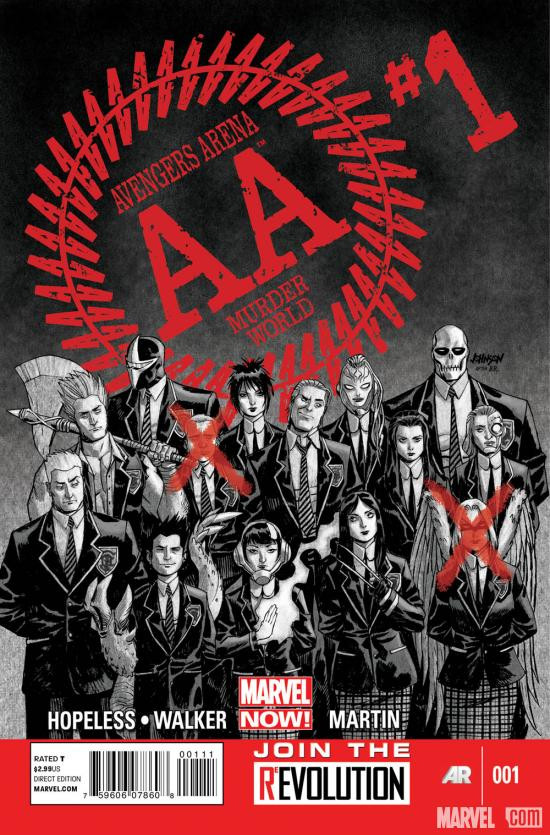 Avengers Arena by Dennis Hopeless and Kev Walker
Avengers Arena by Dennis Hopeless and Kev Walker
This Avengers spin-off is likely to be the aesthetic opposite of the Hickman main titles. That doesn’t mean it will be dumb or groan-worthy or a complete waste of space, but its premise might lead you to believe that. Its high concept is simple: You know that Hunger Games thing the kids are all crazy about? Well this is THAT, but with teenage Marvel characters!
Yet, for all that blatant pandering, the creative team might just make this comic worth reading. Dennis Hopeless is still just starting to make his bones in the Marvel mainstream, but he (a) comes highly recommended by Jason Aaron, and Jason Aaron has excellent taste in writers, (b) wrote the Legion of Monsters miniseries from last year and that was a complete blast of a four-issue story, and (c) he’s working with a premise that actually does have some tradition in the Marvel Universe. After all, the 1980s brought us Longshot and Mojo, and that pairing was like an unrecognized ancestor of Hunger Games. And this new series pits young superheroes in a world controlled by the manipulative Arcade, who has been playing his own vicious games for decades. Plus, Marvel has a long history of taking pop culture and riffing on it in comics, like they did with the Shaft-inspired Luke Cage, Power Man comics or the Bruce Lee mania that led to Master of Kung-Fu.
Kev Walker is the right kind of guy to draw this book, too, with his history drawing 2000 A.D. stories, Magic: The Gathering cards, and Marvel’s own Dirty Dozen in the Thunderbolts.
Yeah, this one may not transcend any of its mercenary roots, but it just might be the guilty-pleasure comic that’s the most purely entertaining out of all of them.
Cable and X-Force by Dennis Hopeless and Salvador Larroca
Unfortunately, Dennis Hopeless will have less of a chance to make his other ongoing series as interesting because he’s hampered by the heavily photo-referenced art of Salvador Larroca. Larroca has shown some signs of stylistic experimentation, and if he brings a completely different look to Cable and the X-Force, this one might be worth a glance, but Larroca has spent the past half-decade hobbling Matt Fraction’s Invincible Iron Man with stiff art seemingly drawn from stills of Josh Holloway and Nicole Kidman. Many readers don’t seem to mind, but it’s perfectly competent, precisely uninteresting art. If that’s what Larroca brings to this new series then you can easily ignore it and you won’t be missing a thing. Except maybe the frustration of recognizing screen shots from recently-seen movies or television shows.
Captain America by Rick Remender and John Romita, Jr.
It seems silly to say that Rick Remender is a rising star at Marvel, because he’s been working steadily in the industry for over a decade, but even a quick look at his massive back catalog would show that his impact as a Marvel writer has only been felt recently. His break-out work at the company was probably his “Franken-Castle” arc in Punisher from 2010, and it was his opening arc on Uncanny X-Force that gave him enough critical attention to turn his reputation from “artist-guy-who-writes-madcap-comics-filled-with-crazy-ideas” to “oh-this-guy-is-really-good.”
Remender’s comics always tend toward spectacle and sensationalism, but the freshness and manic energy he brings to his stories is an important asset in an industry that can tend toward turgid plots and repetitive “events.” And in Captain America, he’s paired with the legendary John Romita, Jr. That’s a good partnership. The worst case scenario is that this will be a smoothly entertaining ride, and it has a good chance to be something more than that. If Remender unleashes his inner iconoclast—he still has a punk rock sensibility at his core—it could be a more dangerously delightful Captain American comic than you’ve ever seen.
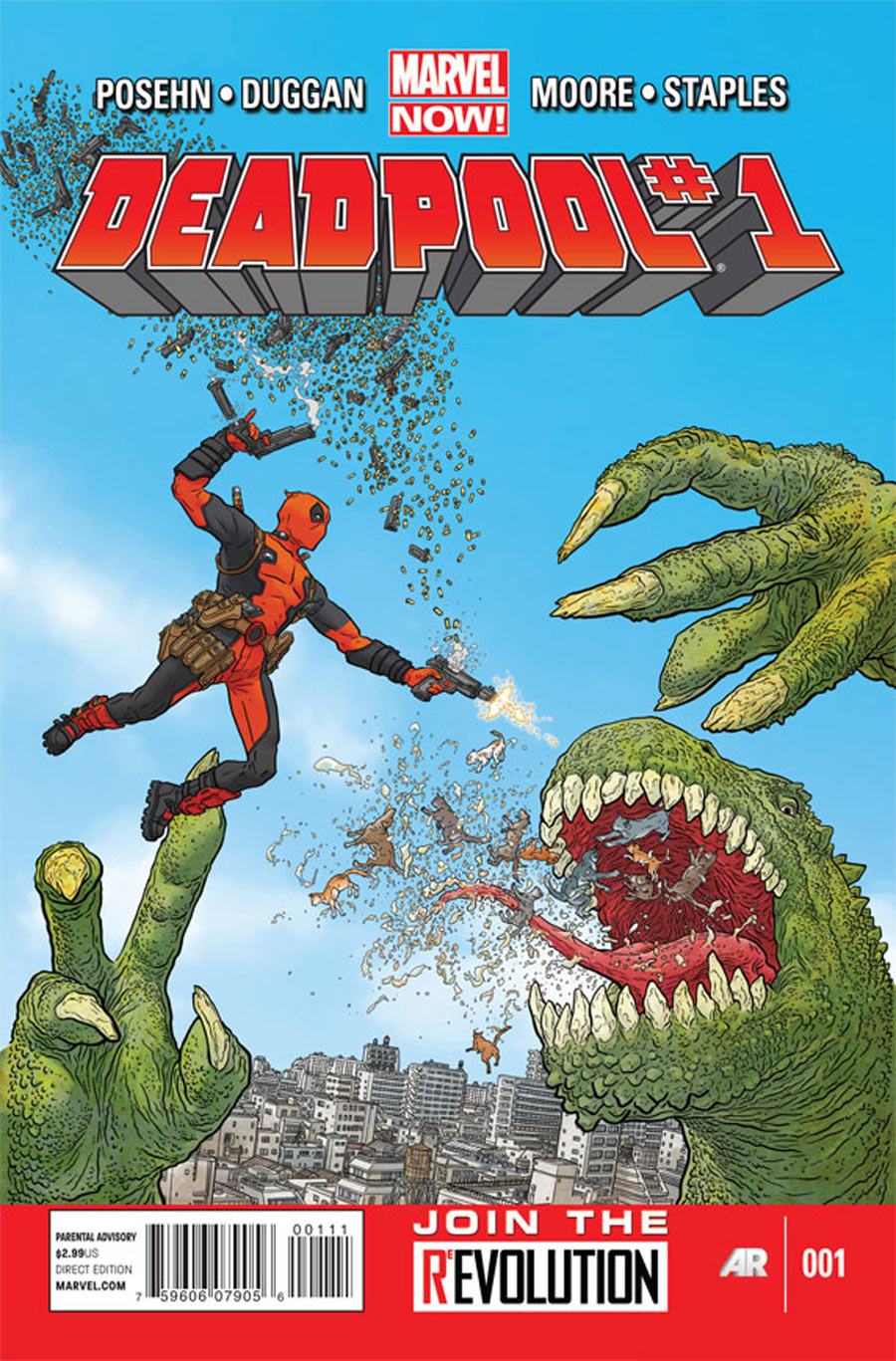 Deadpool by Brian Posehn, Gerry Duggan, and Tony Moore
Deadpool by Brian Posehn, Gerry Duggan, and Tony Moore
Speaking of iconoclasts, here’s Marvel’s “Merc with a Mouth,” in the hands of comedians Brian Posehn and Gerry Duggan, with the gritty-yet-hilarious cartooning of Tony Moore.
A little Deadpool goes a long way, but as David Lapham and Kyle Baker proved with their Deadpool MAX series from last year, the problem with the weaker Deadpool comics of the past is that they have been too tame. If you go far enough, and push the envelope closer to Chuck Jones and Harvey Kurtzman and Will Elder and utter tastelessness, then it’s much more interesting. Then again, Lapham and Baker can do just about anything and make it more interesting than your average Deadpool creative team.
But are Posehn and Duggan and Moore average? Nope. So expect zany, excessive, hijinx.
It’s likely, however, given Moore’s history with ongoing superhero comics, that he will only do a handful of issues and guest artists will be brought in sooner rather than later. And zany, excessive hijinx can become tiresome very quickly. Your best bet on this series is to read the first few issues and walk away. You’ll probably have enjoyed it plenty by then, and, like a heaping ice-cream sundae, you’ll want to push it aside before it becomes sickening.
Fantastic Four by Matt Fraction and Mark Bagley
The press release information on this series indicates that it will take the first family of the Marvel Universe into space. That will give writer Matt Fraction a chance to unleash his creative id and avoid too much social commentary, making for what could very well be an extremely enjoyable comic. Fraction’s Casanova for Image and Marvel’s Icon imprint is still one of the milestones of the past decade of comics, and his work on the current Hawkeye series is some of the best of the monthly mainstream.
Unfortunately, he’s joined by the ever-bland Mark Bagley, an artist who continues to produce work to meet his deadlines, but one who has never produced anything actually worth seeking out. He’s a journeyman artist who will tell the story with anorexic-looking characters and uninspired layouts. Maybe the inking will save him on this series, but I don’t expect it to look much different than the thousands of pages Bagley has drawn in the past decade. Still, telling the story simply may be enough if Fraction’s story is good enough. And it very well could be.
FF by Matt Fraction and Mike Allred
If you’re only going to buy one Fraction Fantastic Four-related comic, though, then I’d recommend this one every time. Allred is one of the great comic book artists of his generation, and it’s always wonderful to see him ply his trade on a colorful superhero comic book series.
With a team featuring Ant-Man, Miss Thing, Medusa, and She-Hulk, this series is so much unlike the rest of the Marvel line-up that it probably doesn’t stand a chance. The current marketplace doesn’t reward anything that looks unlike the movies that the masses see on the big screens. But this FF book will surely be much more visually interesting than the main Fantastic Four series, and it will likely be one of the most consistently enjoyable of all the Marvel NOW! projects. This is going to be one worth buying regularly, especially if Allred sticks around the whole time.
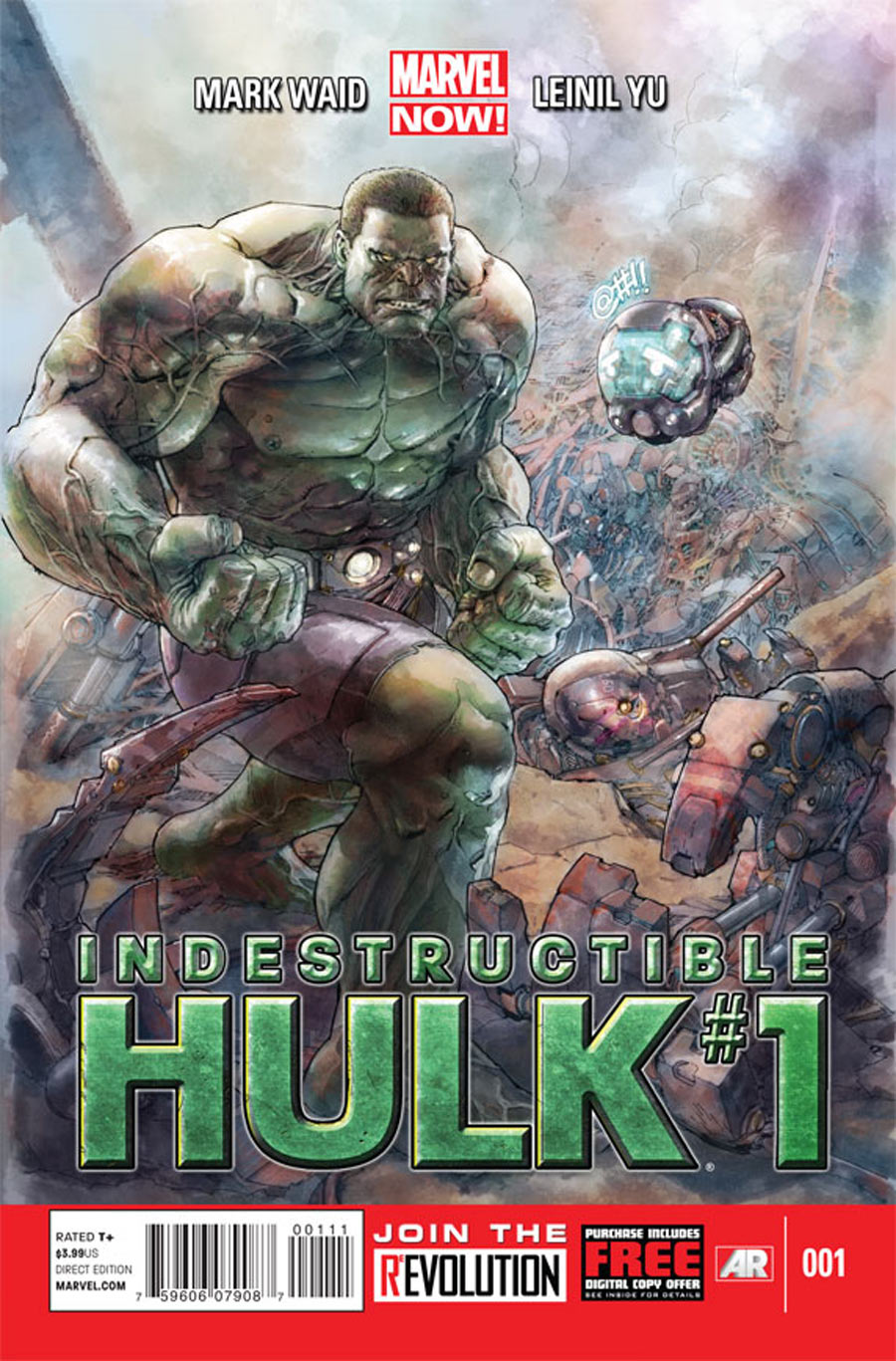 Indestructible Hulk by Mark Waid and Lenil Yu
Indestructible Hulk by Mark Waid and Lenil Yu
The consensus pick for best Marvel comic of the past two years is Daredevil as written by Mark Waid. I don’t always agree with that consensus, but I do think Daredevil is a consistently good superhero comic in a classic mold. It’s well-paced and Waid knows how to get to the heart of a story with grace and elegance, and yet always throw in a few surprises.
That said, I have no idea what his Indestructible Hulk will be like. Waid doesn’t have a distinctive style that he brings to every project. Instead, he creates a style appropriate for each project, which is a very different thing. He can do whimsy and he can do tragic. He can do lightweight as well as he can do ponderous. But no matter the tone or style, the one thing he can do is tell a story, and this one looks to be about the entire world on the lookout for a missing Hulk.
Lenil Yu worked with Waid on the now-erased-from-DC-continuity Superman: Birthright series from nine years ago. He’s one of the better mainstream superhero artists and his scratchy rendering will add volatility to the search for the gamma-radiated menace. This series doesn’t interest me all that much—I’m just not much of a Hulk guy, I suppose—but Waid and Yu are just about as good of a creative team as you’re likely to find on a superhero comic, or a monster comic, or whatever this turns out to be.
Iron Man by Kieron Gillen and Greg Land
Kieron Gillen is an exceedingly smart writer who has done some fine work for Marvel over the past few years, but as good as his literary-and-mythic take on Li’l Loki has been in Journey into Mystery, he’s still never quite managed to transfer the intimate, intelligent, deeply personal approach to Phonogram—his Image comic with collaborator Jamie McKelvie—over to his Marvel work.
It’s a different audience, I suppose, and the small-scale character work would get drowned out in a sea of Marvel monstrosities and enormous events, but I’d love to see Gillen really get a chance to dig into a character who’s a bit more down-to-Earth than the Norse gods. Tony Stark is about as far from a normal human as a “human” can get, but Gillen will no doubt make him a fascinating character. I’d be very curious to see the direction he takes Tony Stark and Iron Man if Gillen were partnered with almost anyone else on the series. But Greg Land has sworn me off his comics years ago, after a period where I was willing to tolerate his Photoshop cut-and-paste retracings of old poses, or pop culture icons. I can’t look at Land’s work anymore without seeing the discordant collage of his figures (an arm pasted onto a different actor’s head and torso, a flying, screaming girl he’s used several times before in the same pose, etc.) No, Land’s work becomes more atrocious the more you see it, and I’ve seen enough.
Gillen deserves your attention on this series, but you’ll have to wade through the Land to appreciate any of it.
New Avengers by Jonathan Hickman and Steve Epting
Hickman’s second Avengers monthly, to add to his larger tapestry of long-form, ambitious storytelling tricks. As I mentioned above, you may have to read a dozen issues (or 24 issues if you buy this second title along with the Avengers book) to see the pieces fit together, but Hickman’s good at making each single issue feel valuable as well. It’s just that the larger story always seems to be something he’s particularly good at, and more natural to the way he designs his fictional worlds. Steve Epting is a classic Marvel artist who has moved from his early John Buscema influence to a guy who’s particularly well suited to superheroes and espionage in a semi-realistic setting. A good fit for this series. And if you’re willing to be patient, this series and its Avengers counterpart will likely be worth your time.
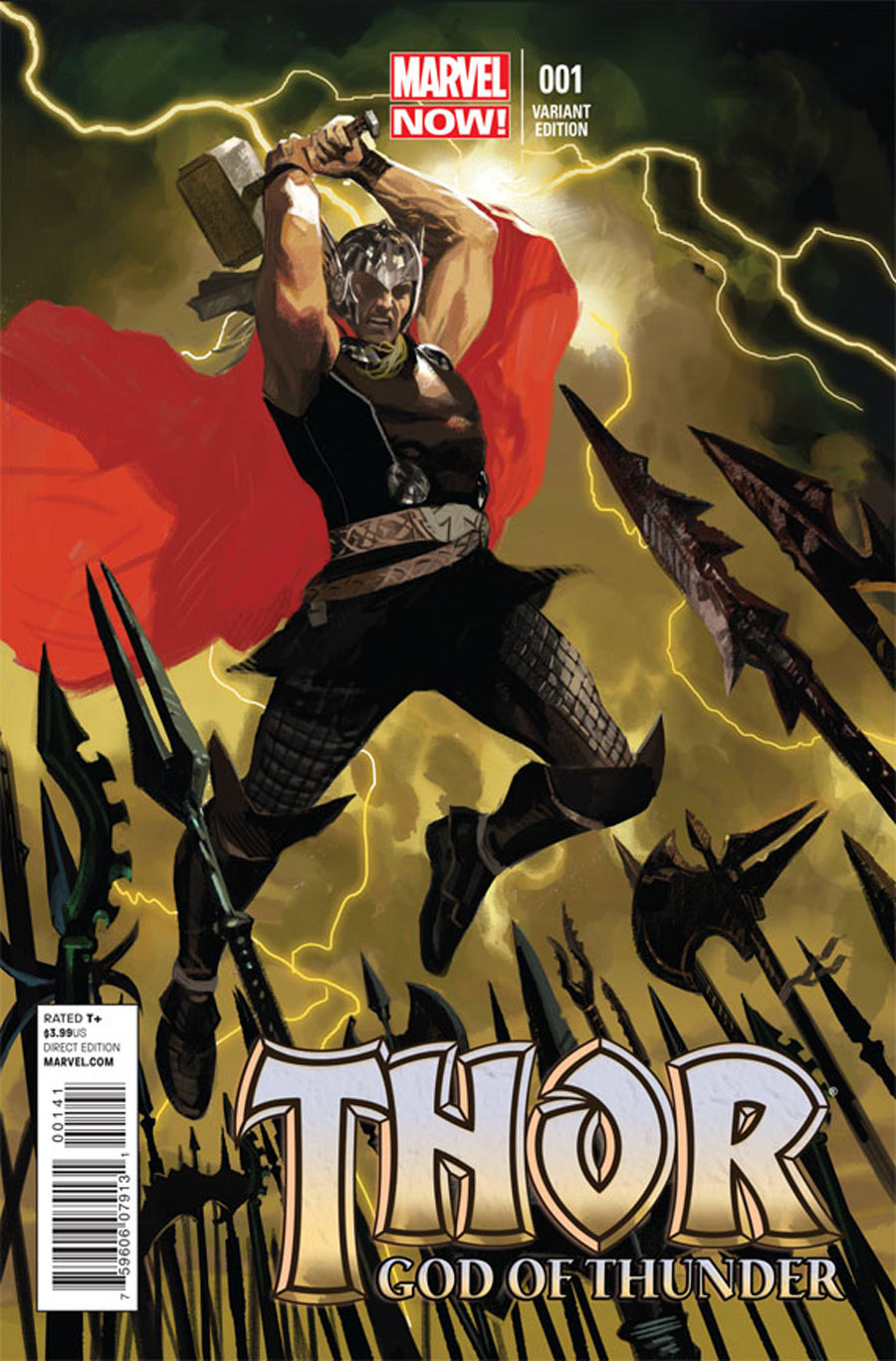 Thor: God of Thunder by Jason Aaron and Esad Ribic
Thor: God of Thunder by Jason Aaron and Esad Ribic
Jason Aaron has written the best crime comic of the past ten years—one of the best crime comics ever—in the recently-concluded Scalped series for Vertigo. But he’s mostly been making a name for himself at Marvel, turning Ghost Rider into an Omnibus-worthy series, giving Wolverine a sharp few years of stories, and playing around with The Incredible Hulk for a little while.
Aaron brings a rugged, battle-worn sensibility to whatever he approaches, and yet he’s also coming at comics from a literary background, where his interests in great novels smashes up against his love for sleazy grindhouse movies and viciously intelligent television serials.
I’m excited to see how that sensibility translates to Thor, because it seems like it would be a lot of fun to read a trashy, quasi-literary, but always nasty, southern Viking approach to the God of Thunder’s adventures.
Esad Ribic is a strong artist—good a majestic landscapes and small character moments—but he does add a polish and kind of painterly classicism that’s in contrast with the kinds of stories Aaron usually likes to tell. That isn’t to say that Ribic can’t do gritty and violent, just that I anticipate that the comic might look a bit cleaner and more grand on the surface than a closer reading might reveal. Yup, this is another good creative team on a comic that should be consistently enjoyable.
Thunderbolts by Daniel Way and Steve Dillon
Artist Steve Dillon is an interesting choice here, on a series that has undergone a couple of rebranding over the past decade-and-a-half. The Thunderbolts team was originally a group of supervillains passing as heroes. Then it became about those former villains trying to live up to heroic ideals. Then it was about a “Dirty Dozen” style team of prisoners sent out on nefarious missions. Then it was that, but as a branch of the Avengers Auxiliary. And, now, with the relaunch it looks to be a special ops team made up of some of the most lethal members of the Marvel Universe.
Daniel Way has shown a preference for writing those kind of gun-toting, badass-killer kind of characters, even if his comics tend to be ultra decompressed and ultimately unsatisfying. But Steve Dillon’s work from Marvel over the past decade has been in books that have a satirical edge. His characters always seem to know more than they let on, and when they unleash the violence it can be both brutally human and ridiculously excessive.
So will this new take on Thunderbolts be an edgy, satirical, ultra-violent comic about sanctioned killers in the Marvel Universe? It just might be. Will it be worth reading? Maybe, but with so many other good choices from Marvel, this is one I would tend to skip.
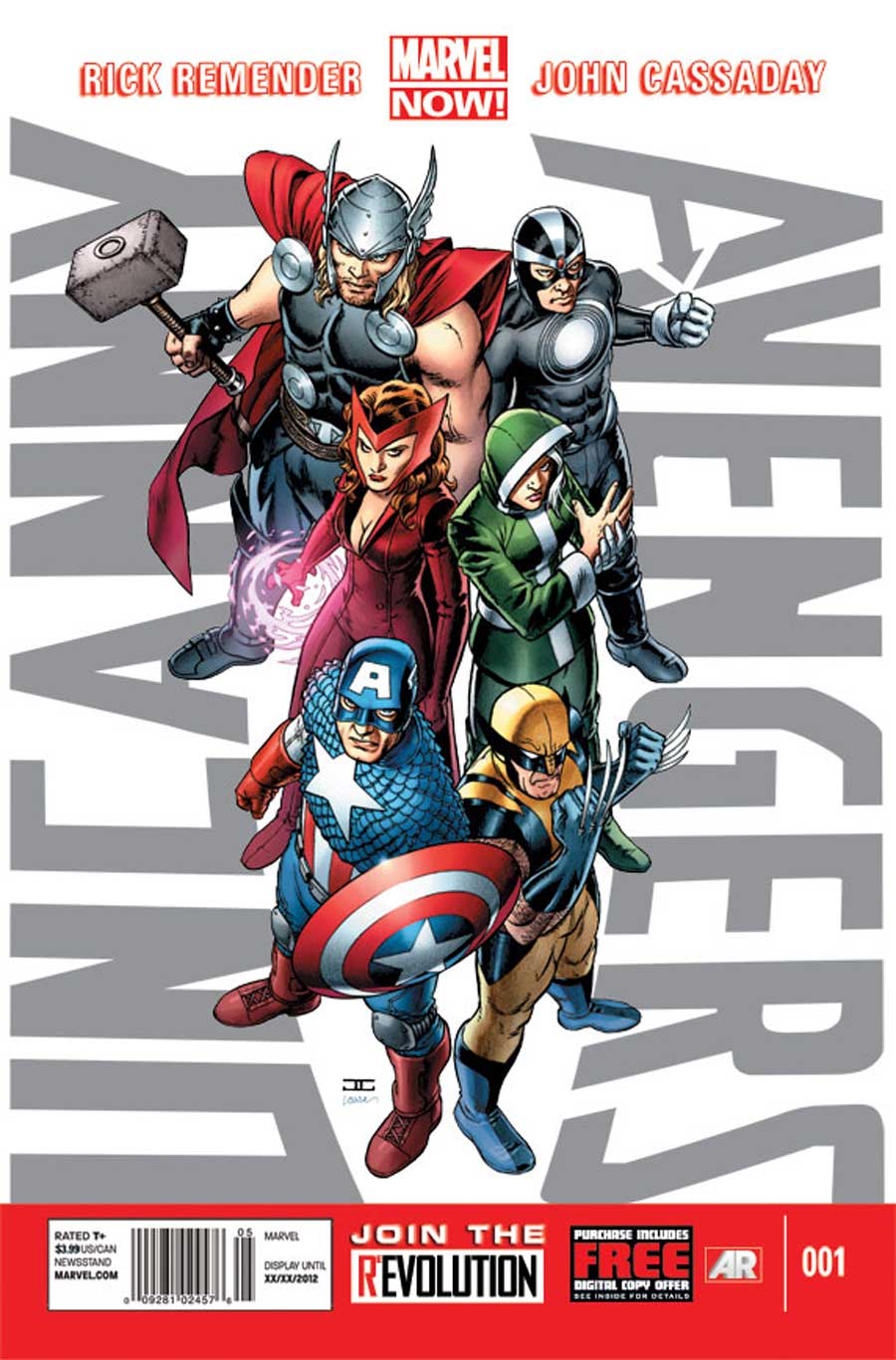 Uncanny Avengers by Rick Remender and John Cassaday
Uncanny Avengers by Rick Remender and John Cassaday
This flagship series—kicking off the entire Marvel NOW! initiative with its October 10th debut—combines a handful of X-Men (the “Uncanny” of the title) with a handful of Avengers (the, um, “Avengers” in the title) into a team that directly addresses the needs of the Marvel Universe in the post-Avengers vs. X-Men world. Does that mean anything to you? I have no idea.
To me, it means that Rick Remender and John Cassaday will get to amplify the inner-team conflict and tell stories as small or as large as they’re willing. But it will probably be mostly large-scale stuff, if this one is being launched as the first of the new series and it has Remender and Cassaday on board.
Cassaday hasn’t drawn a regular series since Joss Whedon’s Astonishing X-Men all those years ago. So this is his big return, and Remender and Marvel would surely plan something grand to mark the occasion.
Because it’s positioned as the flagship of the new launch, I’m actually less interested in it than I would be. It seems like it might lead to a restrained version of Remender, trying to follow up and build off ideas present in a summer miniseries that was written by others. And while Cassaday brings his immense talents to the project from the start, I wonder about how his style will look after years away from monthly comics and a few covers in those years that have been less than impressive compared to his earlier work.
I’ll check this series out, for sure, but I can’t quite recommend it based on what we know about it so far. I hope it surprises me, because I do like the idea of Remender and Cassaday unleashed on a monstrously large-scale superhero melodrama. But I don’t know that this comic will turn out to be that.
Uncanny X-Force by Sam Humphries and Ron Garney
Rick Remender made Uncanny X-Force, made the name “X-Force,” more than a forgettable sideshow in the Marvel Universe. And now he’s passing the book, post-relaunch, on to Sam Humphries, who only a year ago was selling self-published comics out of his apartment. Since that time, and I can’t help but assume that it was the Tor.com publicity that launched him toward stardom (he may see it differently), he’s worked on a variety of projects for different publishers but he’s also been groomed as an up-and-coming superhero writer at Marvel, taking over The Ultimates earlier this year.
If there’s anyone in Marvel’s stable who can build off the lead provided by Rick Remender, it’s Sam Humphries. Those two writers share similar sensibilities, and though Humphries has far less experience, he is well on his way to proving himself as a talent worth watching.
All that said, this new X-Force comic will be a test for Humphries, of sorts. Will he be able to push his voice through the Marvel white noise, or will his need to comply to Marvel expectations soften his rougher edges and make this comic just another comic about some X-Men characters exploring their darker sides? I’ll root for the former, and with veteran Ron Garney providing clean storytelling with a bit of bite, it’s definitely a series I’ll take a look at.
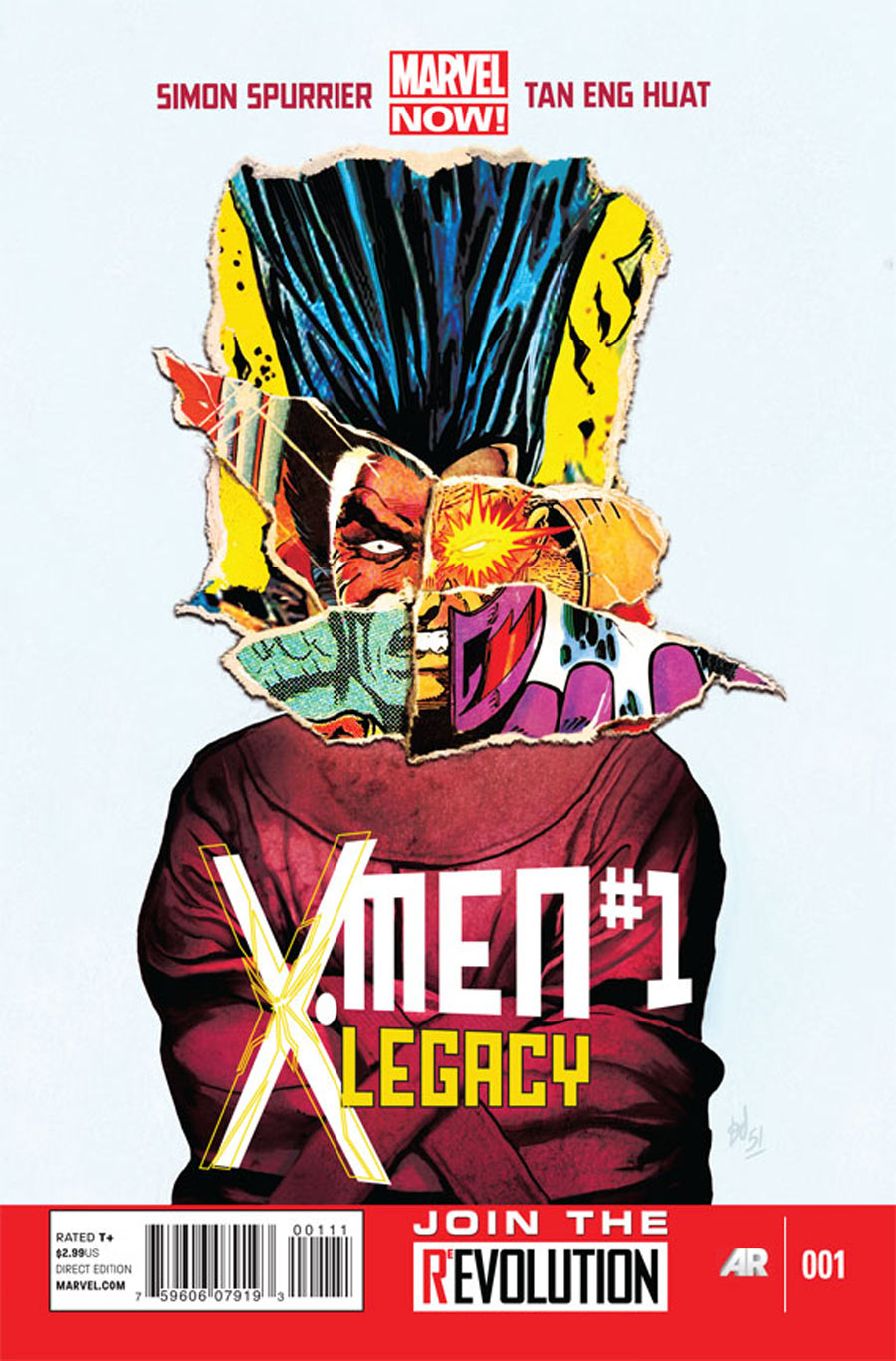 X-Men Legacy by Simon Spurrier and Tan Eng Huat
X-Men Legacy by Simon Spurrier and Tan Eng Huat
This final new X-Men series looks to be the least interesting of them all. Simon Spurrier has done plenty of notable work in the U.K. on 2000 A.D., but he still hasn’t made any substantial mark in American comics even after several tries. He just has not been able to do anything distinctive yet, at least not with the Marvel characters.
This may be his chance, but it’s a comic that focuses on Legion, Professor X’s absolutely unbearable son. And while Tan Eng Huat will bring crazy exaggerated figure drawings and inspired page layouts to the project, it’s still going to be saddled with a core character who has repeatedly dragged down every series he’s ever appeared in.
Some say “there’s no such thing as a bad character, only bad writers,” and I agree with that, but a character like Legion would take an unusually talented writer, and extraordinary circumstances, to redeem. Unfortunately, I don’t think this will be the series that makes Legion worth reading about.
One More Thing: Marvel NOW! Point One
Marvel has been launching most of its new initiatives, over the past few years, with one-shot issues like this, and they’ve gone to calling them “Point One” issues recently. These things act as a sampler for new series and new approaches, and so the Marvel NOW! Point One comic, scheduled for release later this month, will have a taste of some of the new Marvel NOW! comics and give some other Marvel writers and artists a chance to play around in the new status quo for a six-or-eight-pager.
This sampler teams up creators like Brian Michael Bendis and Steve McNiven, Matt Fraction and Mike Allred, Kieron Gillen and Jamie McKelvie, Nick Spencer and Luke Ross, and others. It seems like the kind of single issue that would give you a sense of Marvel NOW! so you’d know which comics might best align with your interest and sensibilities. But what I’ve found from previous attempts by Marvel to do these sampler issues is that they are almost completely uninspired. They give you a few pages of art to check out, but you can see previews of that stuff online anyway. And all you end up with is an overpriced single comic that feels like it’s full of pages but you likely won’t remember as soon as you set it down. If its anything like the ones that have come before, it will be thick, but insubstantial.
I’d recommend diving into to a couple of the ongoing series instead, with the Hickman Avengers or the Fraction FF as the top two worth your attention.
Overall, this Marvel relaunch has much stronger creative teams than DC was able to assemble with its New 52, and though it’s not as far-reaching as rebooting an entire universe, I suspect it will provide Marvel with a sales bump this fall that DC can’t ignore. So look for “DC NOW BUT 52 TIMES BETTER!” by the end of the first quarter next year. Maybe DC can get Batman and the Justice Titans off the ground with a new #1 issue.
Tim Callahan writes about comics for Tor.com and he buys more comics every month than anyone would reasonably expect.


